Frozen tarn. Walls of Jerusalem National Park. Tasmania. Colour transparency.…
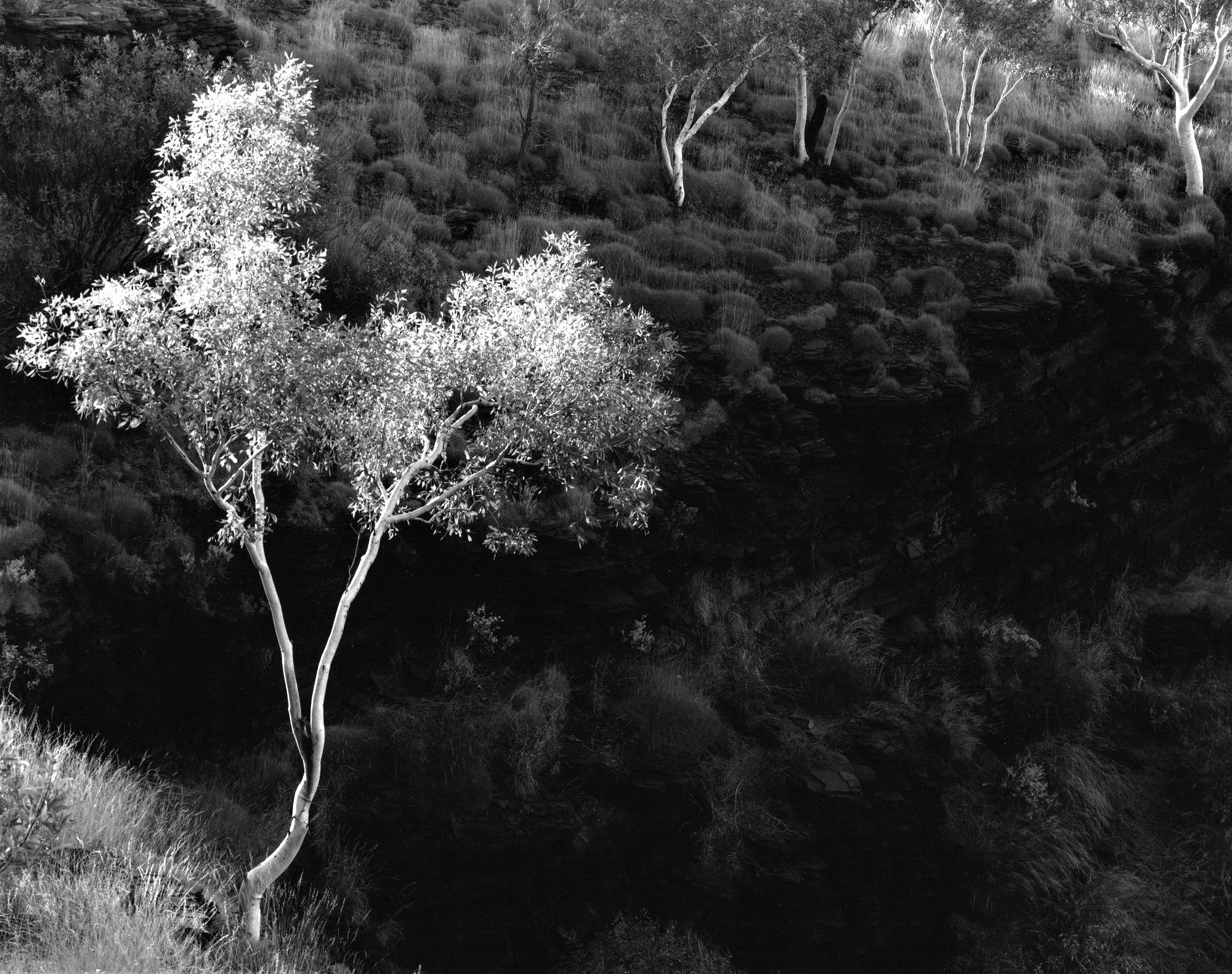
Iron Awe by Murray White
My first trip into Karijini National Park was made in 1985 in a 15 year old dust ridden Holden sedan, but carrying a near new Minolta SRT 101 camera, and probably a couple of rolls of Kodachrome 25. Back then the roads to this Pilbara icon were mighty rough, but the camping was a pleasure. Today the roads are mostly a pleasure, but camping in the national park is mighty rough!
Ok, I might be more critical of the camping than is warranted, given that this park is one of Western Australia’s most popular, and its now swamped infrastructure is hardly the centrepiece attraction. The reason people visit here in droves is not for shaded and spacious camps, but to peer inside our Earth’s ancient crust at a scale as can be done nowhere else in this country.
Unlike the beautiful range country defining our east coast, or even the Kimberley just to the north of here, our gazes of admiration do not look upward to elevated features, but rather are directed down into those gorges that part the rock immediately below our walking boots.
Karijini is home to a number of jagged openings in its geological cap, and many of these gorges are accessible to visitors, although closures are possible during the Wet Season. Some can be appreciated via relatively easy walking trails that overlook sheer geometric shaped rock faces, while others require a more nimble and strenuous commitment on an enchanting descent into the abyss.
There is no doubt that for photographers, Karijini is one of Australiaís most compelling destinations. Its winning trifecta of genuinely saturated colours, contoured geological formations and permanent flowing water forces even visually agnostic visitors to repeatedly reach for their smartphones. More enthusiastic photographers will find plenty of opportunity to spread their tripod legs in locations that for the most part are pleasingly free of boardwalks and signage (so far).
I have visited these gorges on several prior occasions, but last year was the first time I have done so with B&W film. We only stayed for two nights (camping was largely booked out, and other W.A. national park camp bookings had forced our hand), but I managed to burn about 15 sheets of 4 x 5 FP4 and a couple of rolls of 120 FP4. I was reasonably happy with a few negatives, but the cloudless Dry Season sunlight was determined to insist on some rather contrasting subjects.
Photographs taken from within the gorges were less problematic if lit by reflected light from the opposing wall. Early morning was especially suitable, to capture those popular locations like Kermits Pool or Fern Pool forget late afternoon unless you joyfully yearn to include dozens of people in your prints.
Although I didnít shoot any colour film this time, the location definitely lends itself to this medium, as it potentially does for panoramic captures too. Pure white snappy gums and lime green spinifex grasses provide a vibrant lift to the essentially monochromatic deep reds of the prevailing iron rich geology.
I will definitely return to Karijini sometime soon, possibly in the shoulder season, and with prebooked NP camping (such is the reality of contemporary touring). In the meanwhile, I might have a hunt around for those near 40 year old Kodachrome trannys, just to compare what my younger self saw of these same landscapes.
Main photograph above: INTO THE ABYSS
Early morning or late afternoon light is great to isolate detail above the gorges. I squeezed the framing tight on this image to help imply that sense of instability that features on these rocky escarpments.
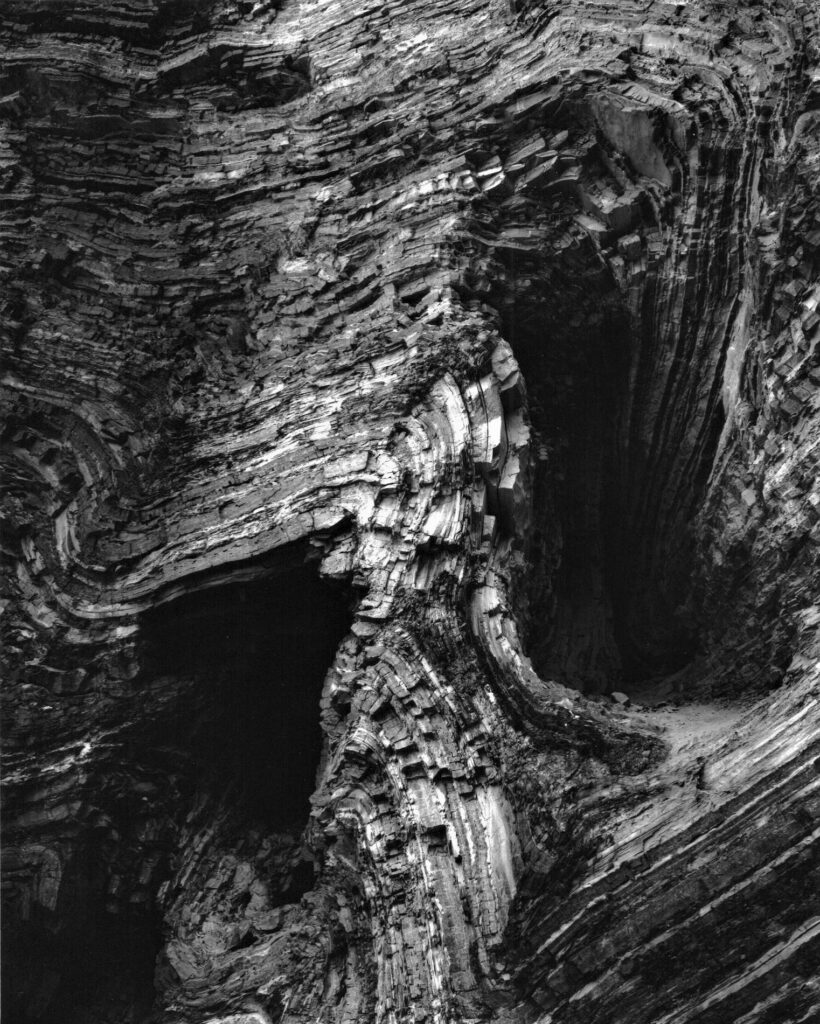
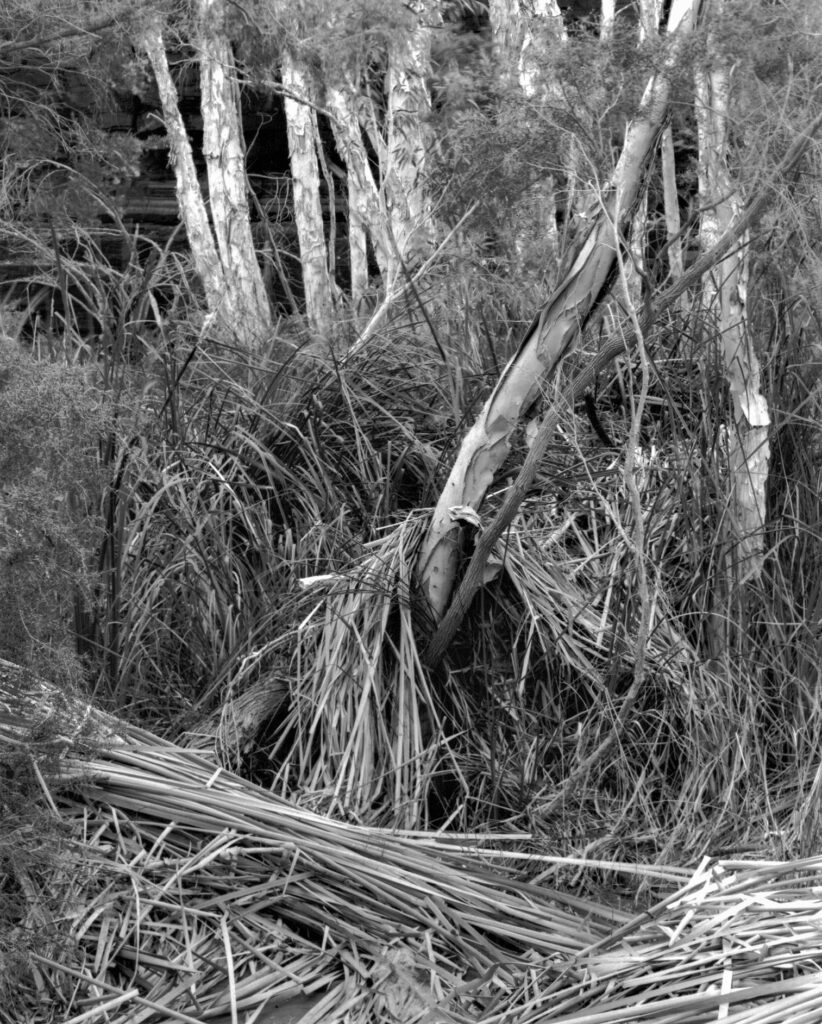
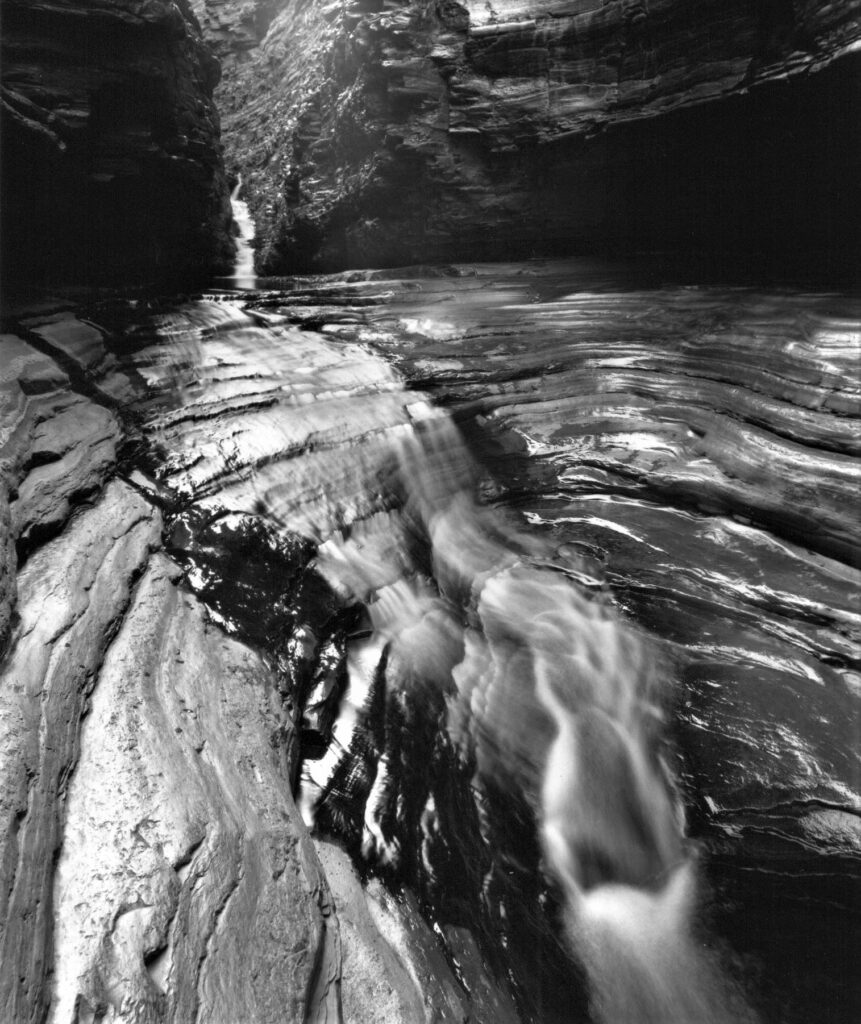
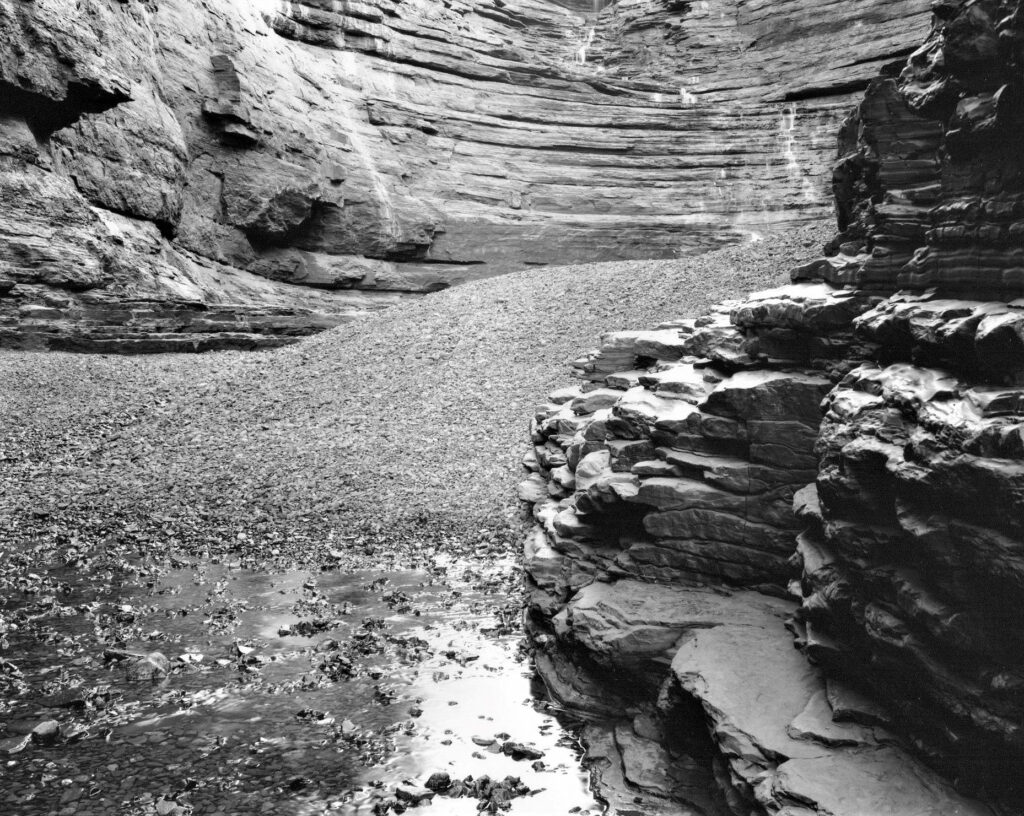
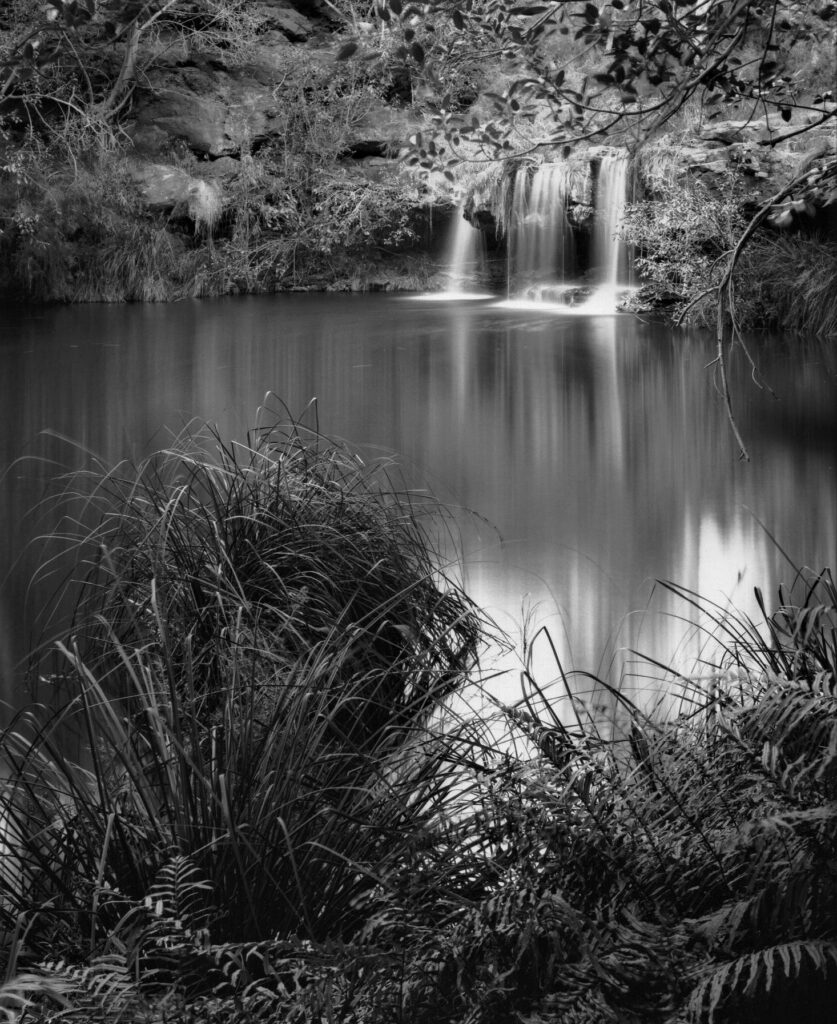
Next Post: Infrared photography – Gale E Spring
Previous Post: Darkroom – A new series for View Camera Australia
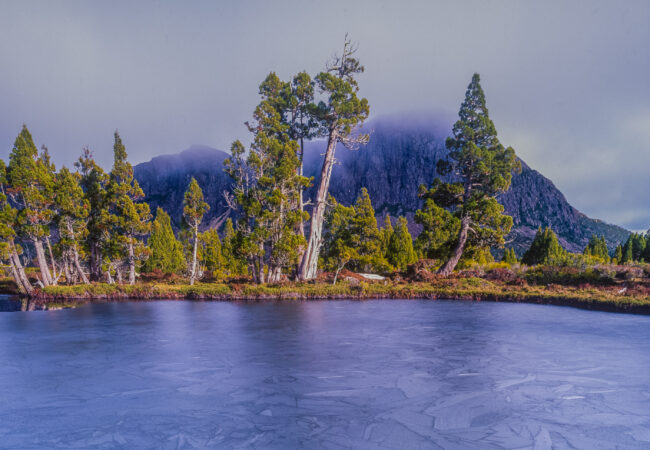
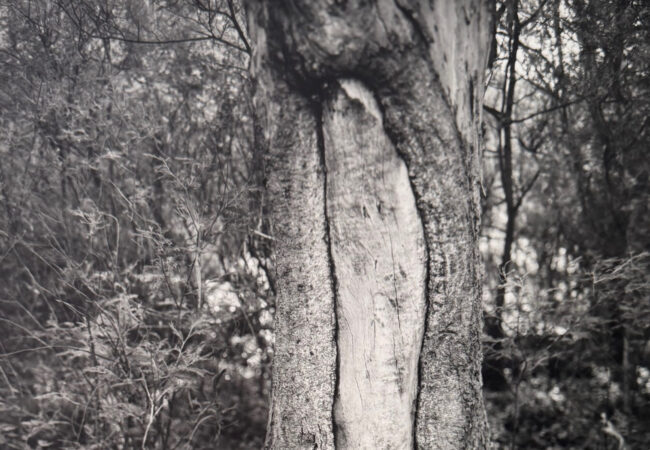

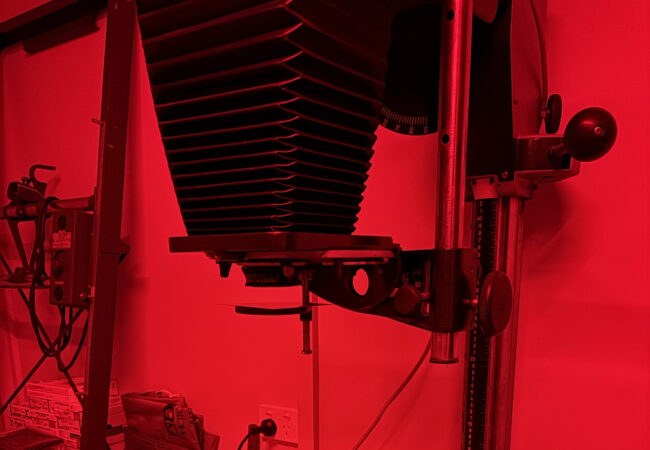
Murray, great article and beautiful photographs.
Lovely photographs and words… such wonderful country.
Thanks for bringing that side of the country to us Murray.
Thankyou David, Bianca and Shane, yes the Pilbara has some very popular coastline, but its hinterland and Karijini are well worth heading inland for.
Absolutely gorgeous images Murray. It looks like such an ancient a peaceful place. You have captured the spirit and managed to avoid all the tourists. Well done
Thankyou Danielle, it is definitely one of my favorite destinations.
An excellent article Murray and lovely photographs! I especially like the Hamersley gorge folded strata image, powerful and dark. It certainly makes me want to invest in a four-wheel drive!
Hey Mat, thankyou. There are very few sentences where invest and 4WD can strung together! You do not need a 4WD to visit Karijini in The Dry, but there are many other less popular Pilbara destinations that you do.
Murray, I do like your images very much – they have a wonderful feel about them. And a lovely description of the country – you make it sound captivating.
Thankyou very much Peter, it is a magic destination whether or not you come away with photographs.
Fabulous pics.
Thankyou very much George
Beautiful photos and great story Murray!
Greg, thank you very much